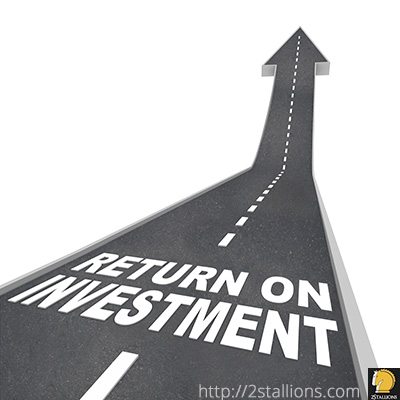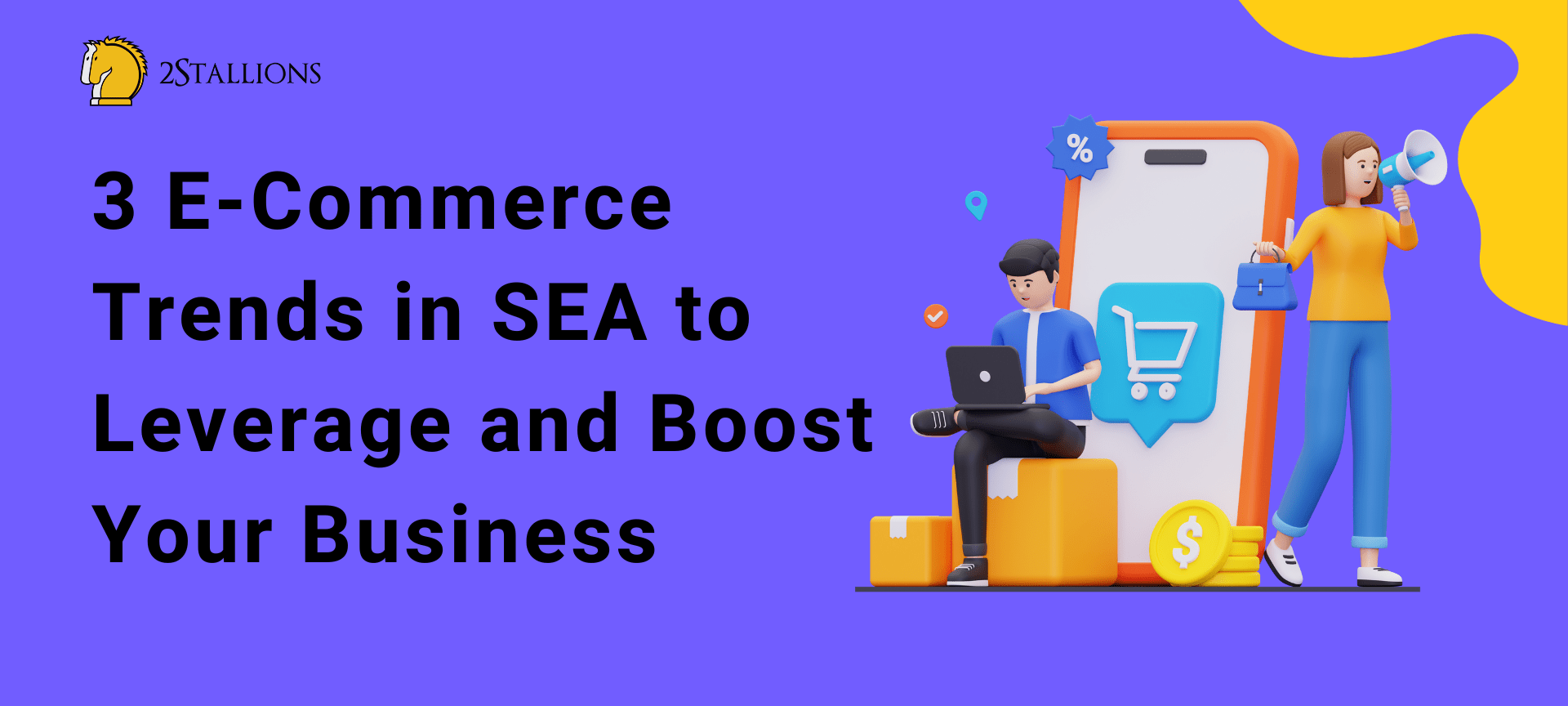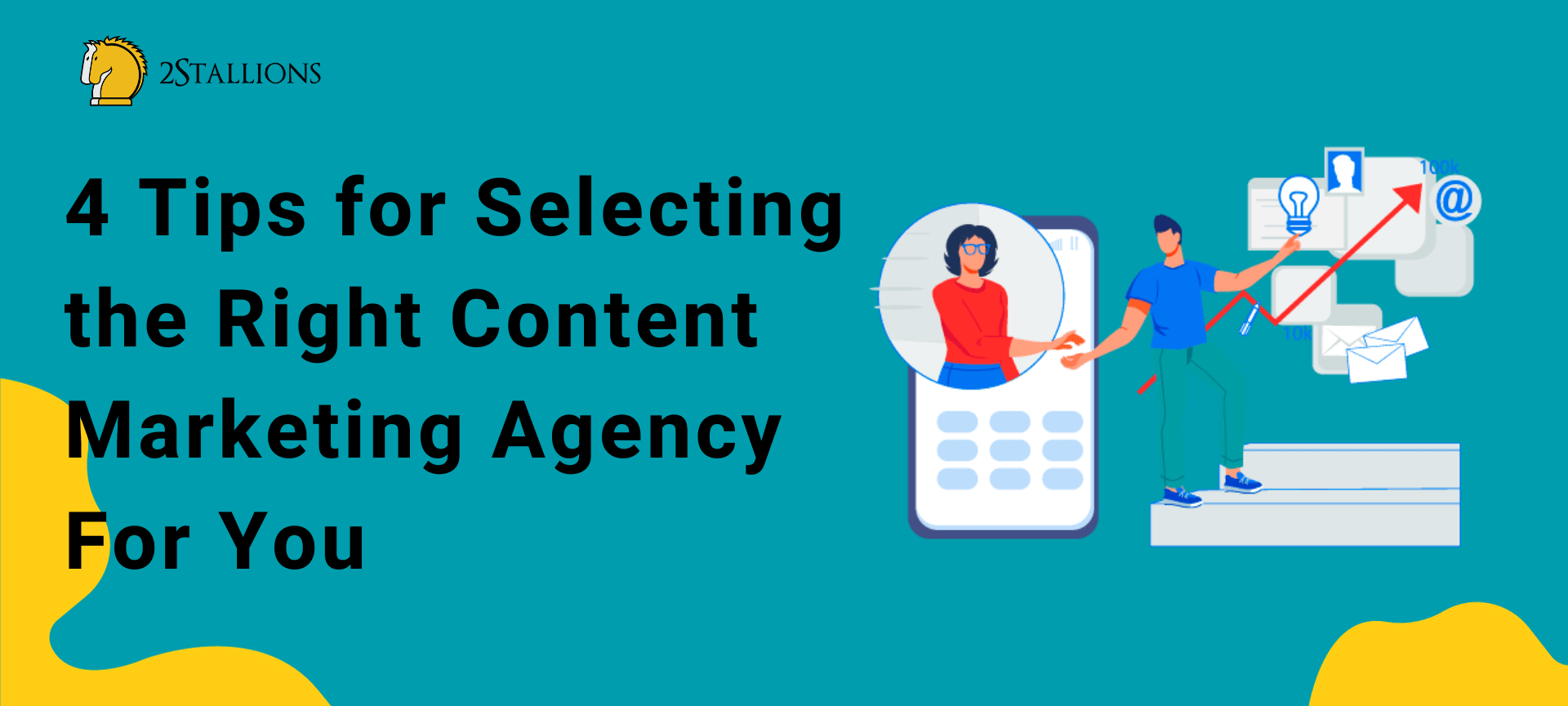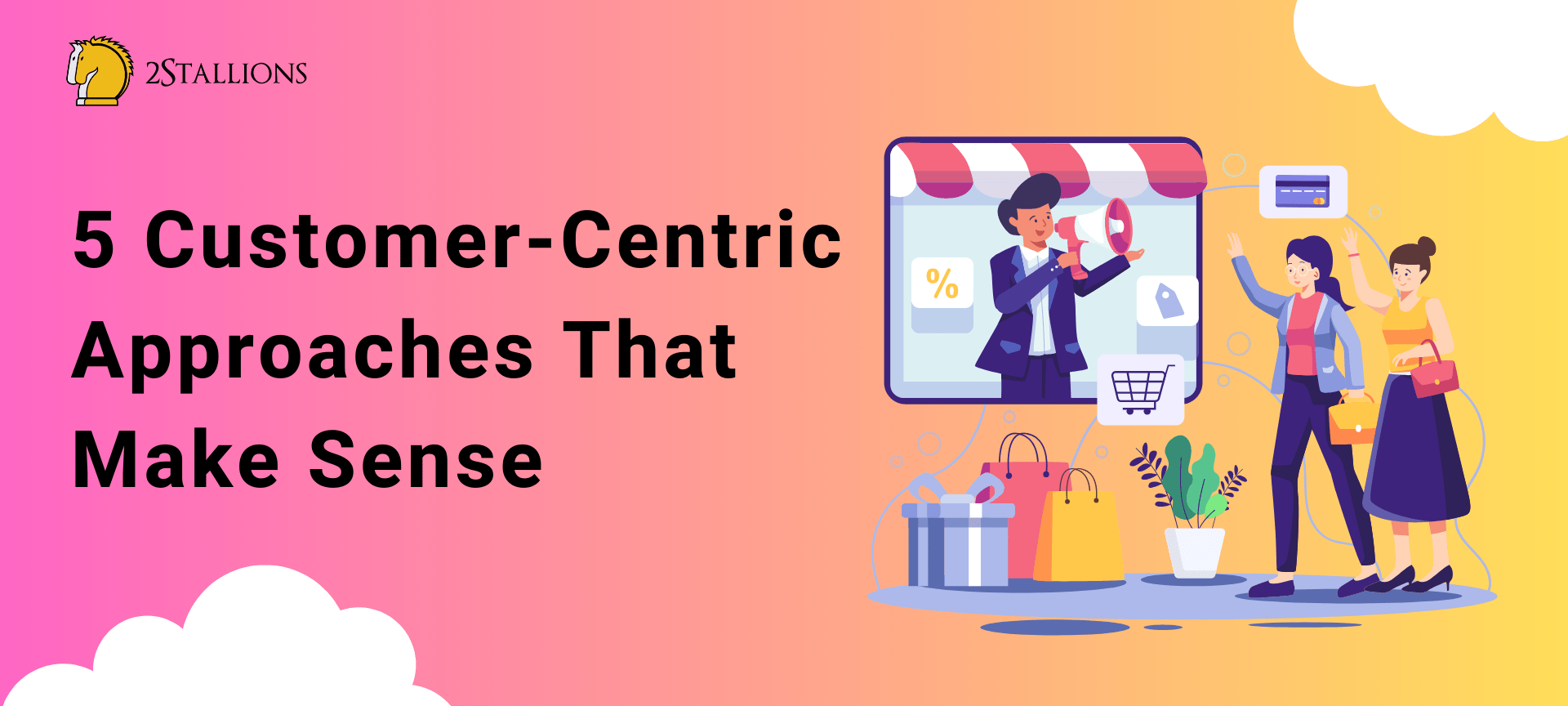Content
SHARE
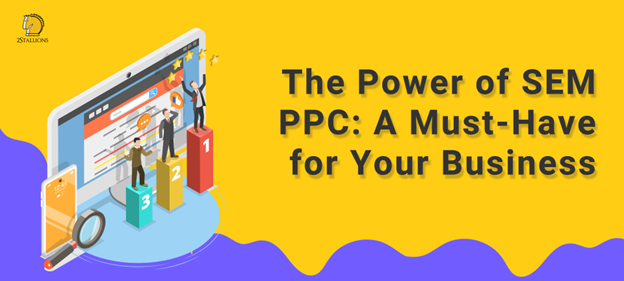
Search Engine Marketing (SEM) is a term every business owner with an online presence should have basic knowledge about. Why? SEM is gaining traffic and visibility from search engines through paid, Pay-per-Click (PPC), and unpaid Search Engine Optimisation (SEO) efforts. PPC and SEO are the two legs of search engine marketing that are vital to your business growth online.
What is SEM/PPC?
Search Engine Marketing (SEM) and Pay-Per-Click (PPC) advertising are integral to a successful online marketing strategy. SEM/PPC refers to using search engines like Google to promote your business and drive traffic to your website through paid advertisements.
FREE DOWNLOAD
Performance Marketing Campaign Launch Checklist For Your Success
Our Performance Marketing Campaign Launch Checklist is a comprehensive guide to guaranteeing a smooth and effective campaign launch.

PPC increases exposure slightly; with campaigns like Google Ads, a business can target users based on demographics, previous searches, and more. These ads appear at the top of search engine results pages, making them highly visible to your target audience.
By bidding on keywords relevant to your business, you can ensure that your ads are shown to potential customers actively searching for products or services like yours.
PPC advertising allows you to control your budget by only paying for the clicks your ads receive. This targeted approach helps maximise your marketing efforts and investment, delivering measurable results and allowing you to reach your business goals more effectively.
Whether you are looking to generate leads, increase online sales, or drive brand awareness, SEM and PPC advertising is an essential tool for businesses of all sizes.nPPC is a great short-term strategy for driving traffic (though many businesses continue utilising it beyond the short term because of the returns).
Conversely, SEO is a long-term approach that reaps benefits once your website ranks on the first page of Google. To help you decide if your business needs PPC advertising, we will run down the most common form of online advertising through this article.
When done right, PPC advertising, such as Google Ads or Google Search Ads, is beneficial for businesses because it offers fast results and targeted branding opportunities no matter the size of the business’ budget. With a suitable funnel and call-to-action on the website landing page, PPC advertising creates a high chance of converting these leads to customers.
How PPC Advertising for SEM Works
Step 1. Set a PPC advertising goal for your campaign
First, you need a business website to direct users who click on your PPC ads. You begin by setting a PPC goal for your business. Your goal could be to get users to do one of the following:
- call you
- sign up for your mailing list, or
- submit a filled-in contact form (you gain their contact details to market to them in future)
To help put things into context, we’ll use a seafood restaurant business as an example. The PPC ads goal of our seafood restaurant is to get visitors to make a reservation at their restaurant through their online form.
Step 2. Select the keywords to achieve your goal
The next step is to select keywords that help you achieve your goal. Determining the user intent behind searching for the keyword you choose is essential. For example, someone searching for “seafood” may be researching seafood or looking for recipe ideas (informational intent) as opposed to actually wanting to visit a seafood restaurant.
This means the keyword “seafood” is likely too broad for our seafood restaurant to generate leads.
For the seafood restaurant, a better keyword would be “seafood restaurant Singapore” because a user searching for “seafood restaurant Singapore” has the following possible intent:
- Look for a website to find out about seafood restaurants (more relevant informational intent) or
- To visit a seafood restaurant (which serves the goal)
In either case, this is an excellent keyword to get a qualified lead to the website. Furthermore, according to Google Keyword Planner, which is a tool to determine the popularity of a keyword, there are 1,000 searches each month on average in Singapore for this keyword.
Step 3. Set your bid amount
Having selected a keyword or a set of keywords, you then set a bid. It is the amount you will pay for a qualified lead to land on your website. This is an auction system as multiple businesses in the same space compete to get their advert on the first page.
For some keywords, this results in prices of over $20 per click. The average bid for the keyword ‘seafood restaurant Singapore’ is $1.25 (correct as of 30 June 2015 from Keyword Planner).
Step 4. Create your ad copy and a landing page
When setting up the ad, you also set a landing page. This is where the user who clicks the ad will end up on your business website. Google determines the position of ads on its search results page based on an internal algorithm that considers the relevancy of the landing page to the keyword and, of course, the bid you’re willing to pay.
This is known as the Quality Score. The ad could be among the top 3 search results if the relevancy score is high. Lower relevancy could push you down to one of the side results or even onto the second page.
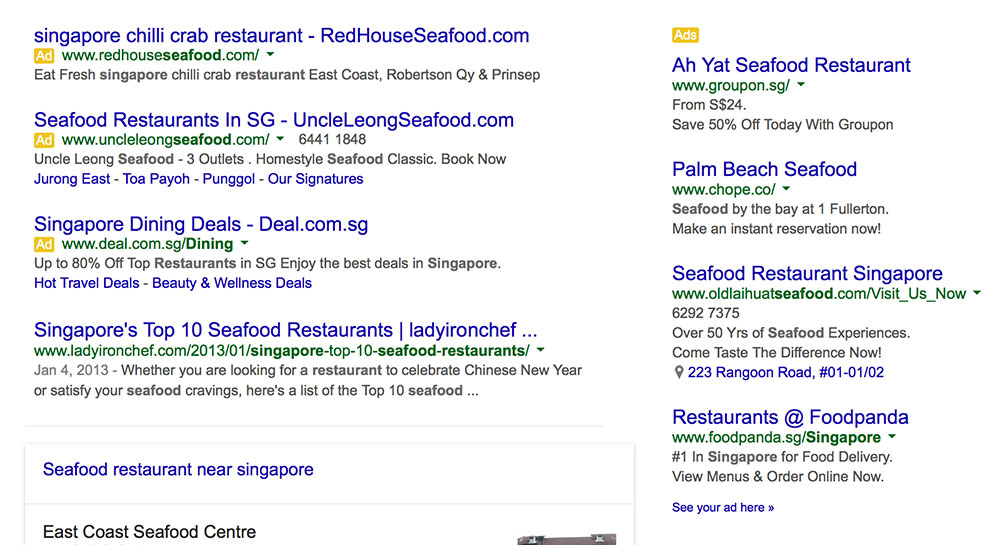
It is vital that the copy of the ad clearly explains what the visitor should expect if they click on it. This is to improve your goal’s conversion rate (the percentage (%) of clicks you get compared to the number of views your ads get) by ensuring only the most qualified searchers click on it.
 Why Should Your Business Invest in PPC Ads?
Why Should Your Business Invest in PPC Ads?
1. Potentially Rank Above Competition
PPC ads are attractive because they allow a website that needs to rank organically (unpaid) via SEO on the first page of Google to show up above its competition on the first page. This is important because studies show that the first page of Google receives 71.3% of the clicks of all searches for the keyword. The second and third pages get about 5% each.
2. Only Pay for Clicks, Not Views
The best thing about PPC ads is that you only pay Google when someone clicks on your created ad. So, your ad could appear 1,000 times, but if only ten people click on it (a conversion rate of 1%), you only pay Google 10 * $1.25 or $12.50. As a business, you should maximise the conversion rate for your ads. Still, all those views (Google calls them ‘Impressions’) also increase brand awareness for your business.
3. Set a Budget to Maximise ROI
If you get many clicks (which is great if a large percentage of clicks generate revenue), your advertising expense quickly gets out of hand.
This is where budgeting comes in. You can set a daily budget so that your ads stop showing once your limit has been reached. This ensures you stay within your means while maximising your returns.
4. Get Qualified Data for Other Marketing Channels
PPC ads can also be used to determine the most lucrative keywords for your business. You can then aim to rank on Google for those keywords organically through SEO.
If your conversion rate for ‘seafood restaurant Singapore’ is lower than ‘seafood restaurant Singapore west’, for example, your SEO campaign could aim to rank for the latter long tail keyword rather than the former.
If you’re hosting an offline event for marketing that you’re not sure would generate enough interest, run a PPC ads campaign to test it out before running the event.
The Uncertainty of PPC Ads Success
It’s vital to recognise that more than merely getting people to click on your pay-per-click (PPC) ads is needed to guarantee automatic success in acquiring new customers and generating additional revenue. The ultimate determinant of success lies in what happens after the click, specifically, the experience visitors have on your business website’s landing page.
The Landing Page’s Role in Conversion
The landing page serves as the critical bridge between initial interest and conversion. Its design and content can significantly impact whether visitors become paying customers. For instance, let’s consider a seafood restaurant aiming to convert visitors into diners. In this context, a landing page should ideally be tailored to encourage a specific action that aligns with your goal – for the restaurant, this action is making a reservation.
A Conversion-Focused Landing Page
To maximise the effectiveness of your landing page, it should be designed with a clear and compelling call to action. In the case of our seafood restaurant, this might involve prominently featuring a “Make Reservation” button. However, the call to action is just one aspect; the landing page should also provide essential information that assists visitors in making informed decisions.
Here are some elements to consider for a conversion-focused landing page:
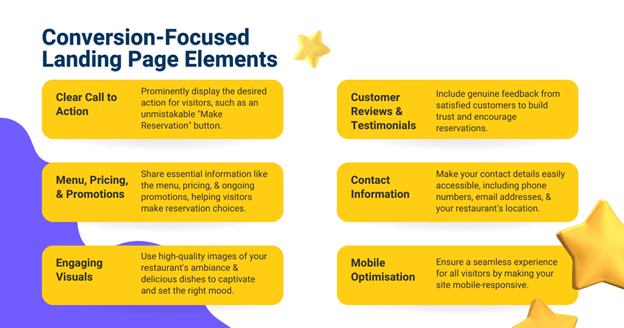
How To Determine If PPC Ads Are Good for Your Business
The easiest way to calculate your return on investment (ROI) is by placing a dollar value on your goal.
For example, seafood is generally an expensive meal, and we can assume that at least two people (since meals are rarely taken alone at restaurants) will show up per reservation.
Based on this, we can take the return per reservation to be at least $80. If the seafood restaurant spends $12.50 for ten clicks and even ONE (1) makes a reservation, the restaurant would make $80 – $12.50 or $67.50 from their pay-per-click campaign.
This means their Cost per Acquisition (CPA), which refers to the expense of getting one customer, is $12.50. As a business, you must create a spreadsheet to tabulate all the costs incurred to complete your sale.
For the seafood restaurant, this could include the estimated cost of cooking ingredients, chef and utilities per meal. To profit from the reservation, your CPA needs to be greater than Revenue minus Costs (e.g., $80 – $50 = $30 > $12.50). Generally, the smaller the value for CPA, the better your profit margin will be.
Why Should You Prioritise SEO in Your Marketing Strategy?
While Pay-Per-Click (PPC) advertising can be an effective means of acquiring new customers, it’s crucial to consider the long-term sustainability of your marketing efforts.
Unlike SEO, which offers lasting benefits, PPC advertising incurs ongoing expenses each time someone clicks on your ads. As a business, your ultimate goal should be to reduce your marketing expenses over time or strategically reinvest the capital into exploring new avenues for generating organic traffic.
The significance of integrating SEO into your marketing strategy becomes apparent when you understand that, although there are upfront costs associated with SEO implementation, it can significantly decrease your dependency on PPC in the long run.
Here’s why these matters:
- Sustainable Growth: SEO is an investment in the long-term growth of your online presence. When you optimise your website for search engines, you’re working to improve its visibility in organic search results. Once your site ranks well for relevant keywords, you can enjoy steady organic traffic without incurring additional costs for each visit.
- Cost-Efficiency: Unlike PPC, where you pay for every click, SEO costs are relatively fixed after the initial optimisation efforts. Your SEO expenses become more predictable and sustainable with consistent maintenance and updates. This stability allows you to allocate your marketing budget more effectively.
- Diversification of Keyword Strategies: By diversifying your keyword strategies and focusing on SEO, you can reduce reliance on a limited set of expensive keywords in your PPC campaigns. This diversification lowers your PPC expenses and opens up opportunities to target a broader range of keywords that may drive valuable traffic to your site.
- Increased Credibility and Trust: Websites that rank well in organic search results are often perceived as more trustworthy and authoritative by users. SEO brings more visitors to your site and enhances your brand’s credibility, positively impacting your conversion rates and customer retention.
- Competitive Advantage: Investing in SEO allows you to gain an edge over competitors who rely solely on PPC. Over time, you can build a solid online presence that consistently draws organic traffic, making you less vulnerable to fluctuations in advertising costs or changes in the PPC ads landscape.
While PPC ads have their advantages for immediate results, SEO is a strategic investment that offers long-term benefits, reduced marketing expenses, and the opportunity to diversify your keyword strategies.
Incorporating SEO into your marketing efforts can lead to sustainable growth, cost-efficiency, increased credibility, a competitive advantage, and a more robust overall online presence, ultimately contributing to the success of your business.
Conclusion
Search Engine Marketing is crucial in pushing a business with an online presence today. Ignoring it due to a lack of knowledge and time is not an excuse.
Understandably, as a business owner, you have a thousand and one things to do, so consider hiring a transparent and motivated agency to drive your search engine marketing efforts on your behalf.
Originally published: 15 June, 2015
Updated: 27 June, 2024
Let 2Stallions help you conquer the digital world with our expertise in Search Engine Marketing and PPC advertising in Singapore. From optimising meta tags to creating click-worthy ads, we can amplify your brand’s resonance and scale your search rankings. Join us today for digital dominance.
Frequently Asked Questions About Why Your Business Needs SEM & PPC
”What
SEM PPC, or Search Engine Marketing Pay-Per-Click, is a form of online advertising where businesses pay a fee each time a user clicks on their ad within search engine results, like Google Ads. It differs from other methods, such as display advertising, as it targets users actively searching for specific keywords, making it highly targeted and effective.
”Why
While SEO is essential for long-term organic visibility, SEM PPC offers immediate results. It allows your business to appear at the top of search results for specific keywords, ensuring you reach your target audience right when they are actively searching for your products or services. It complements your SEO efforts and provides a quicker ROI.
”How
SEM PPC offers a high potential for ROI because you only pay when someone clicks on your ad. This means you are investing in users who have already expressed an interest in your products or services. Additionally, PPC campaigns are highly customisable, allowing you to optimise your ad spend to maximise conversions and lead generation.
”Is
SEM PPC is suitable for businesses of all sizes. It can be particularly beneficial for small and medium-sized enterprises (SMEs) because it provides a level playing field in the online marketplace. The budget for PPC campaigns can be set according to your financial capabilities, making it accessible for businesses with various budgets. It’s a scalable advertising strategy that can be tailored to your specific needs.

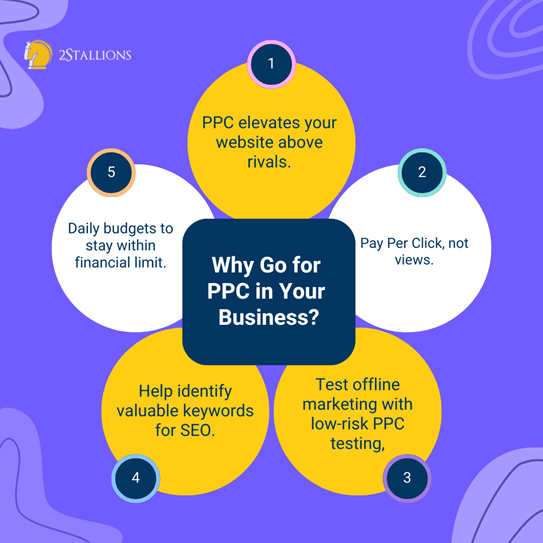 Why Should Your Business Invest in PPC Ads?
Why Should Your Business Invest in PPC Ads?